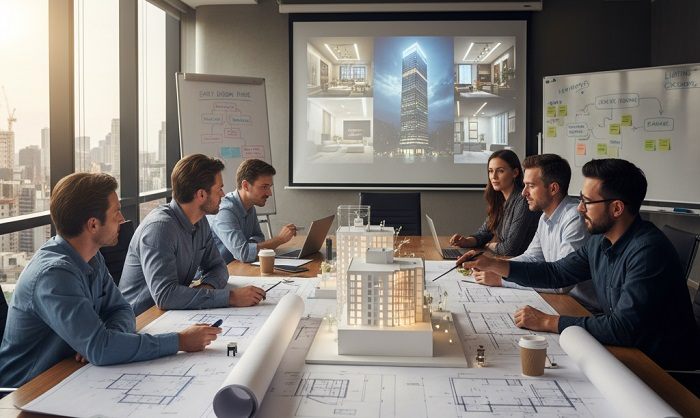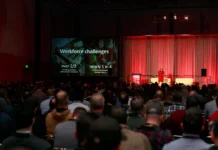Bringing Lighting Strategy Into the Early Stages of Construction Planning
The integration of comprehensive lighting strategy construction planning from project inception represents a fundamental shift in how the construction industry approaches illumination design and implementation. Rather than treating lighting as an afterthought or late-stage specification decision, forward-thinking project teams recognize that early lighting integration creates opportunities for better design coordination, improved performance outcomes, and more cost-effective installations that serve project objectives throughout building lifecycles.
The Cost of Late-Stage Lighting Integration
Traditional construction approaches that defer lighting design decisions until late in project development create unnecessary risks, cost increases, and missed opportunities for optimization that can significantly impact project outcomes. When lighting systems are specified after architectural and structural decisions have been finalized, design teams face constraints that limit performance possibilities while potentially requiring expensive modifications to accommodate lighting requirements.
Electrical system capacity and distribution planning directly affects lighting system capabilities and installation costs, with inadequate early coordination often resulting in undersized electrical infrastructure that cannot support desired lighting performance or future expansion needs. Early integration of lighting strategy construction planning enables electrical systems that support optimal lighting performance while avoiding costly infrastructure upgrades during construction or after occupancy.
Structural coordination challenges emerge when lighting systems require mounting points, recessed installations, or integrated architectural elements that were not considered during initial building design. Early lighting planning identifies these requirements while structural systems can be easily modified to accommodate them without significant cost or schedule impacts.
Integrated Design Process Benefits
 Early collaboration between lighting designers, architects, engineers, and contractors creates opportunities for synergistic design solutions that optimize multiple building systems simultaneously while achieving superior performance outcomes compared to individual system optimization approaches. This integrated methodology requires structured communication and shared decision-making processes that maintain design intent while addressing practical construction requirements.
Early collaboration between lighting designers, architects, engineers, and contractors creates opportunities for synergistic design solutions that optimize multiple building systems simultaneously while achieving superior performance outcomes compared to individual system optimization approaches. This integrated methodology requires structured communication and shared decision-making processes that maintain design intent while addressing practical construction requirements.
Building Information Modeling (BIM) applications enable sophisticated coordination between lighting systems and other building components while identifying potential conflicts before they become construction problems. These digital collaboration tools support early lighting strategy construction planning by providing three-dimensional visualization of system integration while enabling rapid evaluation of design alternatives and modifications.
Value engineering processes benefit significantly from early lighting integration, as design teams can evaluate system alternatives and optimization opportunities while maintaining flexibility to implement changes without compromising project schedules or budgets. Late-stage value engineering often forces suboptimal lighting decisions that reduce performance while providing minimal cost savings.
Energy System Integration and Sustainability Planning
Early lighting strategy development enables comprehensive energy planning that optimizes the relationship between lighting systems, HVAC loads, and renewable energy integration while supporting green building certification requirements and long-term operational cost management objectives. This integrated energy approach often identifies opportunities for system coordination that improve overall building performance.
Daylight harvesting and automated control systems require careful coordination with building envelope design, interior architectural elements, and HVAC systems that significantly influence overall effectiveness. Early planning enables architectural decisions that optimize natural light availability while supporting artificial lighting integration for consistent illumination quality throughout varying daylight conditions.
Renewable energy integration including solar panels and energy storage systems can be optimized to support lighting loads when early planning coordinates system sizing and operational characteristics. These integrated approaches often enable more cost-effective renewable energy installations while ensuring adequate capacity for lighting system requirements throughout daily and seasonal operational cycles.
Technology Infrastructure Planning
Modern lighting systems require sophisticated control and communication infrastructure that must be integrated with broader building technology systems including security, fire safety, and building automation platforms. Early planning ensures adequate infrastructure while avoiding conflicts between different technology systems that can compromise performance and increase installation costs.
Network architecture and cybersecurity considerations for smart lighting systems require early planning to ensure adequate bandwidth, security protocols, and system integration capabilities that support both immediate operational needs and future expansion requirements. These infrastructure decisions significantly affect long-term system capabilities and operational costs.
Internet of Things integration and data management systems for advanced lighting require early planning to ensure appropriate data collection, processing, and storage capabilities while addressing privacy and security concerns that affect system operation and regulatory compliance throughout building operational life.
Construction Sequencing and Installation Coordination
Lighting system installation often requires coordination with multiple construction trades including electrical, mechanical, architectural finishes, and specialty contractors whose work sequences can significantly impact lighting installation efficiency and quality. Early planning enables optimized construction sequencing that minimizes conflicts while ensuring adequate access for proper installation procedures.
Material delivery and storage requirements for lighting systems must be coordinated with overall project logistics while ensuring that sensitive electronic components receive appropriate protection from construction dust, moisture, and physical damage throughout installation periods. Early planning addresses these logistical requirements while avoiding delays and damage that compromise system performance.
Testing and commissioning procedures for lighting systems require adequate time allocation and coordination with other building system commissioning activities. Early planning ensures appropriate commissioning schedules while avoiding conflicts with other system testing that could delay project completion or compromise system verification procedures.
Stakeholder Communication and Expectation Management
Early lighting strategy development provides opportunities for comprehensive stakeholder education about system capabilities, operational requirements, and performance expectations while building consensus around design objectives and operational procedures that affect long-term satisfaction and system effectiveness.
User training and operational procedure development benefit from early planning that identifies training requirements while providing adequate time for comprehensive education programs that ensure lighting systems achieve intended benefits throughout their operational life. Without proper training, even well-designed systems may fail to deliver expected performance and user satisfaction.
Maintenance planning and lifecycle management require early consideration of access requirements, component standardization, and service procedures that affect both installation design and long-term operational costs. Early integration of maintenance considerations into lighting strategy construction planning optimizes both system design and operational efficiency.
Risk Management and Contingency Planning
Early lighting strategy development enables comprehensive risk assessment and mitigation planning that addresses potential technology performance issues, supply chain disruptions, and installation challenges that could affect project outcomes. These proactive risk management approaches reduce project uncertainty while ensuring adequate contingency planning for potential problems.
Technology selection and vendor evaluation processes benefit from early planning that provides adequate time for thorough assessment of system capabilities, manufacturer support, and long-term product availability. Rushed technology decisions often result in suboptimal system performance and increased operational complexity throughout system lifecycle.
Performance guarantees and warranty provisions require careful evaluation during early planning phases to ensure appropriate protection while understanding manufacturer capabilities and limitations that affect system design and operational expectations throughout warranty periods and beyond.
Regulatory Compliance and Code Coordination
Building codes and energy efficiency requirements significantly influence lighting system design while requiring early coordination to ensure compliance without compromising performance objectives or increasing project costs. Early integration of regulatory requirements into lighting strategy construction planning enables proactive compliance approaches rather than reactive modifications.
Accessibility requirements including emergency egress lighting, visual accessibility standards, and universal design principles must be integrated into early lighting planning to ensure comprehensive compliance while maintaining design intent and aesthetic objectives throughout building development.
Environmental regulations including light pollution ordinances, energy efficiency mandates, and sustainability requirements require early planning to ensure compliance while optimizing system performance and avoiding costly modifications during later project phases.
Quality Assurance and Performance Verification
Comprehensive quality assurance programs for lighting installations require early planning to establish performance criteria, testing procedures, and acceptance standards that ensure system performance meets design intent while providing accountability throughout construction and commissioning processes.
Mock-up installations and prototype testing provide valuable verification opportunities that require early planning and adequate budget allocation to ensure representative system testing under actual installation conditions. These verification procedures help identify and resolve potential issues before full-scale installation begins.
Performance monitoring and optimization systems require early planning to ensure appropriate data collection capabilities, analysis procedures, and reporting systems that support ongoing system optimization and facility management throughout building operational life.
Innovation Integration and Future Adaptability
Emerging lighting technologies and control capabilities require early evaluation and planning to ensure that lighting systems remain current throughout their operational life while providing flexibility for future upgrades and modifications that may be required for changing building needs.
Research and development coordination with manufacturers and technology providers can provide access to advanced capabilities while ensuring appropriate support for innovative system applications. Early engagement with technology providers often provides opportunities for customized solutions that better serve specific project requirements.
Professional development and continuing education for project team members support better decision-making throughout lighting strategy construction planning while ensuring access to current knowledge about advancing technologies and design approaches that can enhance project outcomes.
The integration of lighting strategy into early construction planning phases represents a fundamental improvement in project delivery approaches that creates measurable benefits throughout project lifecycle while supporting superior performance outcomes. The most successful implementations will be those that maintain focus on integrated design approaches while leveraging advancing technology and professional collaboration to achieve optimal lighting performance that serves both immediate project needs and long-term operational objectives throughout building life.































